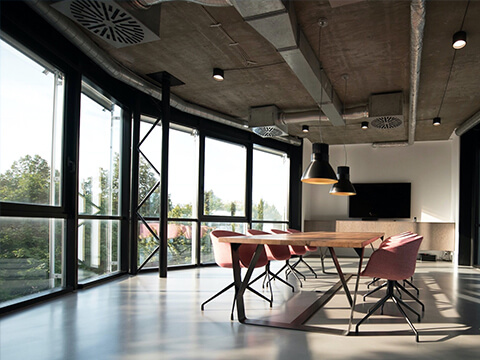 Big box stores are prevalent and in every major (and minor) city, but how much real estate space are they actually occupying? They have seemingly grown into behemoths that offer almost any product your heart desires and a virtual one stop shop. These retail titans have an incredible footprint across the United States even when smaller business are closing. While e-commerce was the dominating fear, it wasn’t that long ago that small mom and pop stores were worried that Walmart would drive them out of business. Whatever the resulting reality of the scenario, one thing is for sure, big box retail chains have grown tremendously over the past 10 – 15 years.
Big box stores are prevalent and in every major (and minor) city, but how much real estate space are they actually occupying? They have seemingly grown into behemoths that offer almost any product your heart desires and a virtual one stop shop. These retail titans have an incredible footprint across the United States even when smaller business are closing. While e-commerce was the dominating fear, it wasn’t that long ago that small mom and pop stores were worried that Walmart would drive them out of business. Whatever the resulting reality of the scenario, one thing is for sure, big box retail chains have grown tremendously over the past 10 – 15 years.
Walmart
Walmart is one of the biggest retailers, with over 11,200 stores worldwide. With their mix of supercenters, discount stores, Sam’s Club and neighborhood markets, this massive company has an incredible 1.1 billion total square feet for its stores. This is 40 square miles of retail real estate which is twice the size of Manhattan in New York! Over the past 10 years, Walmart increased its footprint by 60% and has told investors that they plan to double it over the next 5 years. Their same store sales increased by 3.3% and their grocery sales grew by 4%. During the pandemic, Walmart’s online sales soared by 74%
Target
Target is another well-known big box store that occupies a large amount of retail space. The company has supercenters, regular stores and smaller retail stores. The average Target store has 130,000 square feet, with 1,846 total locations in 2019 resulting in a total of 242,564,400 square feet. This is roughly 9 square miles, which is the equivalent size of Santa Monica, California. The company has been aggressively expanding its footprint and had an average 3% same store sales before the pandemic.
COSTCO Wholesale
COSTCO is a beloved big box retailer and is well known for their warehouse shopping aisles filled floor to ceiling with a large selection of items in bulk. The average store is 145,300 square feet, which is the largest of any other big box retailer. COSTCO only has 762 stores, but their sales rose 11% in 2019.
Home Depot
The largest home improvement retail store is the go to place for any equipment, supplies, appliances and hardware. An average Home Depot store occupies 104,000 square feet and they have 2,286 locations. This is a total of 238,658,400 square feet or 8.5 square miles of retail space. Their instore sales increased by 3.2% last year and during the pandemic Home Depot made 2.0 billion more in revenue compared to the first quarter of 2019.
The pandemic has certainly changed the retail landscape with many small businesses forced to close permanently. Big box retailers seem to be the beneficiaries as more sales and traffic flows to them even during this crisis. These retail stores saw their sales bounce from the pandemic, but the stay at home orders from most of the nations’ governors limited the number of shoppers at their stores. Developers and real estate investors face the contradictory trend of even bigger stores as big box retailers grow in size and scope.






